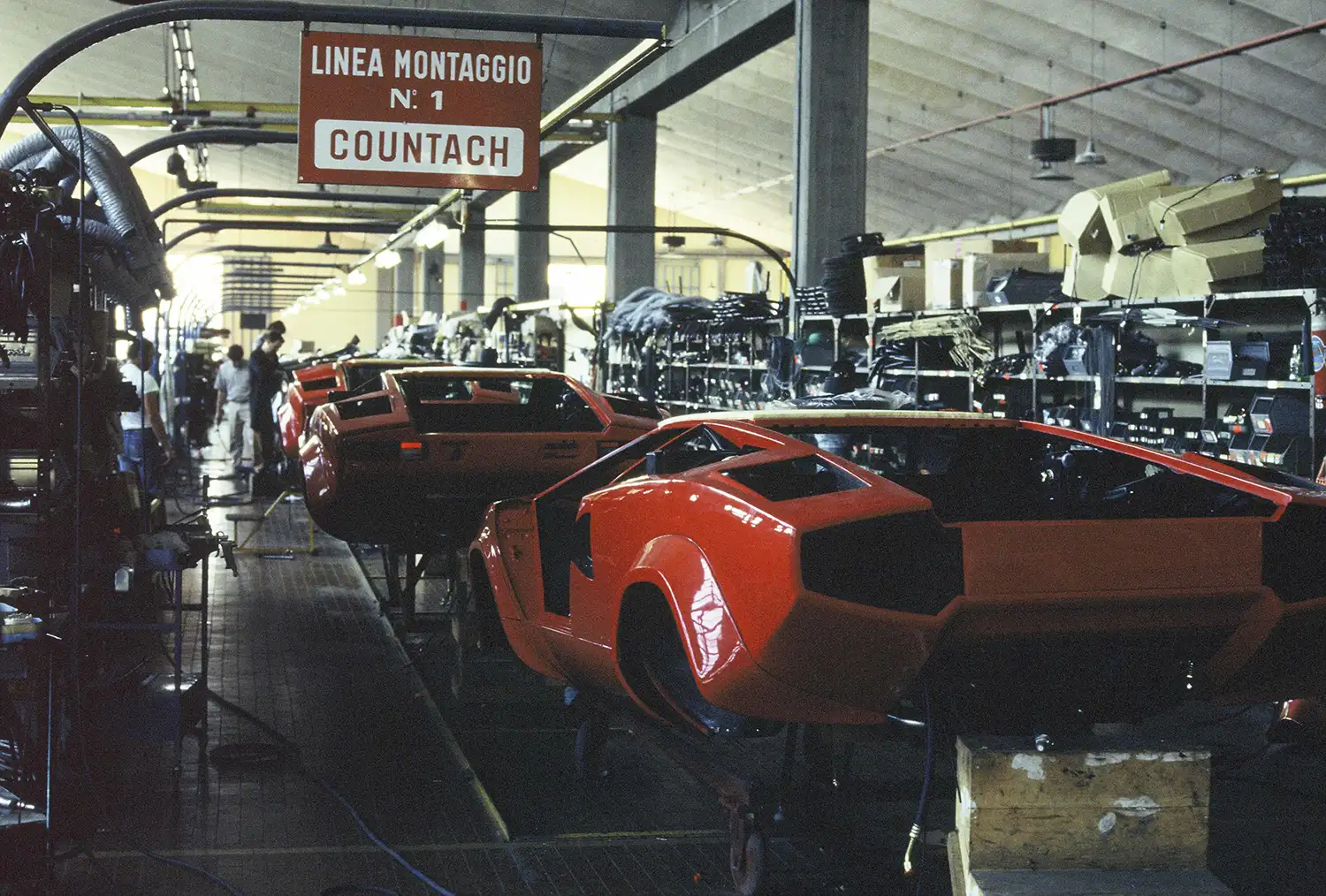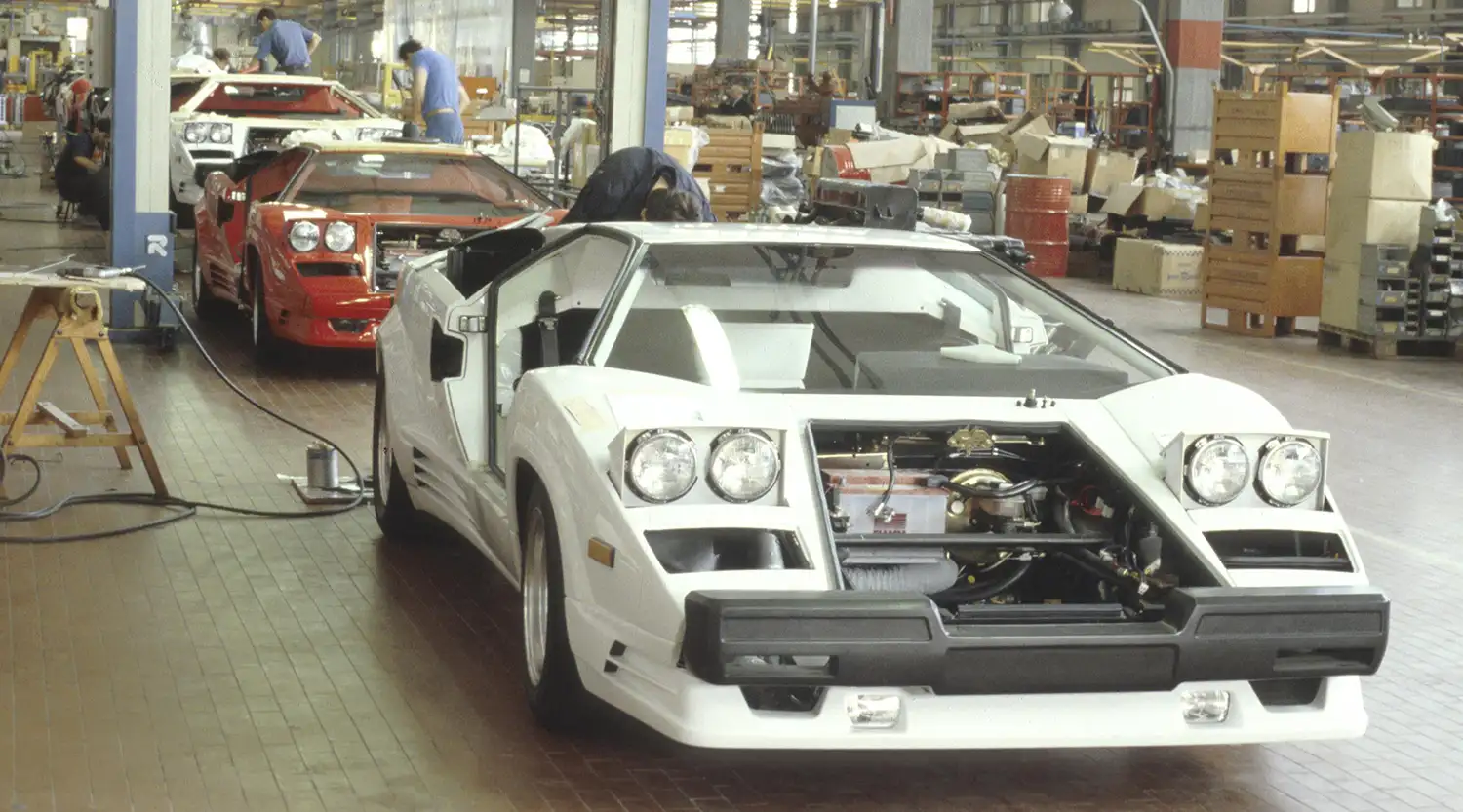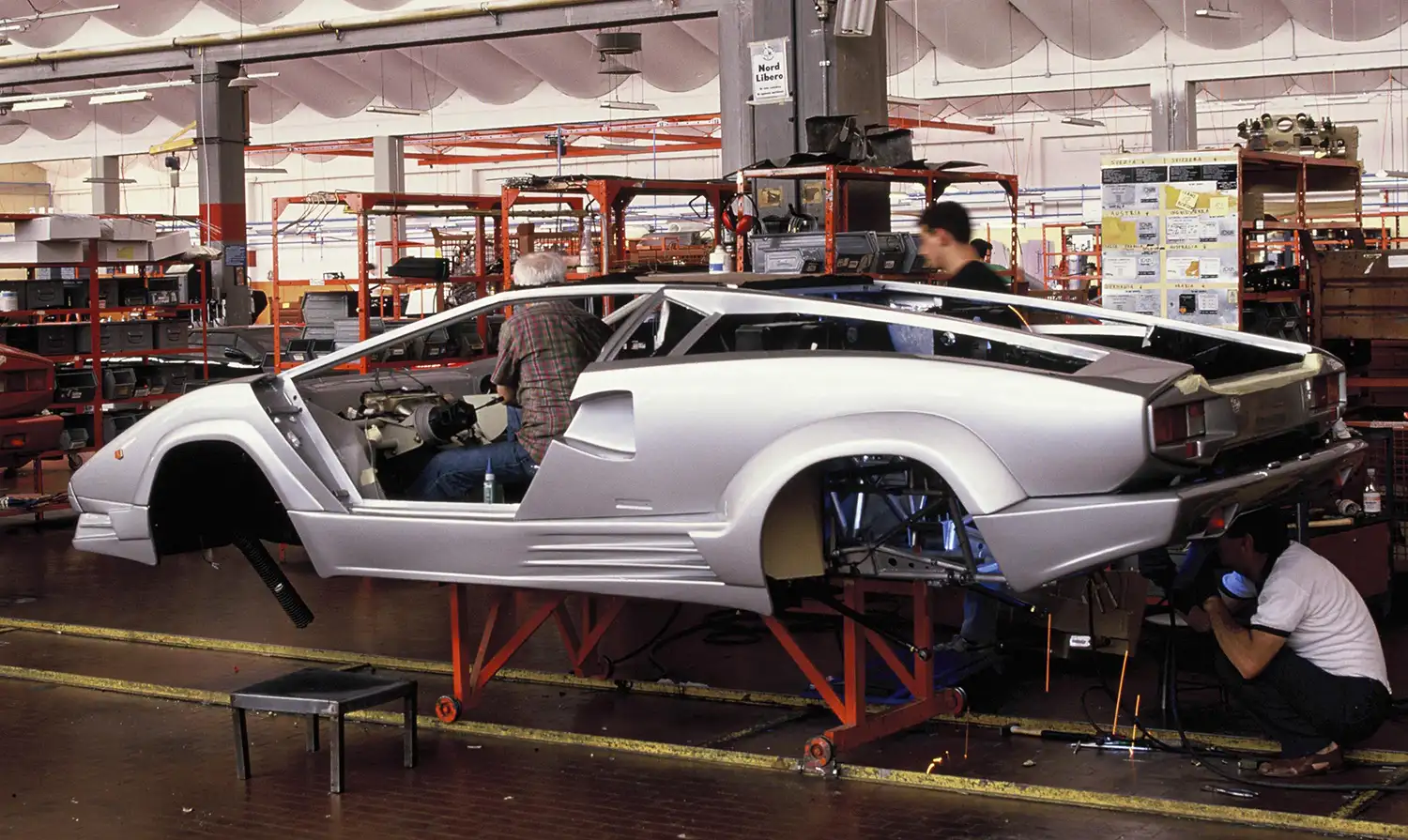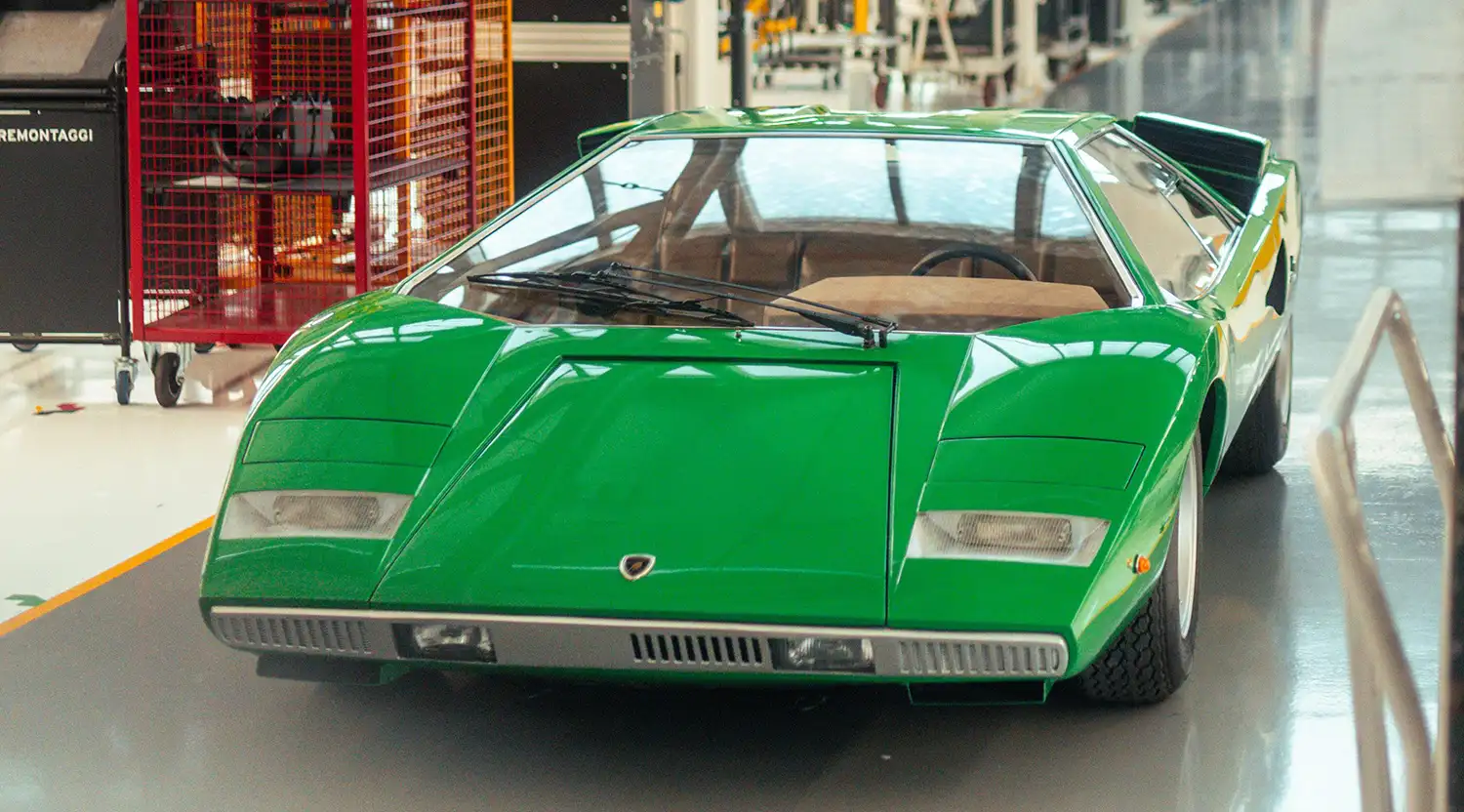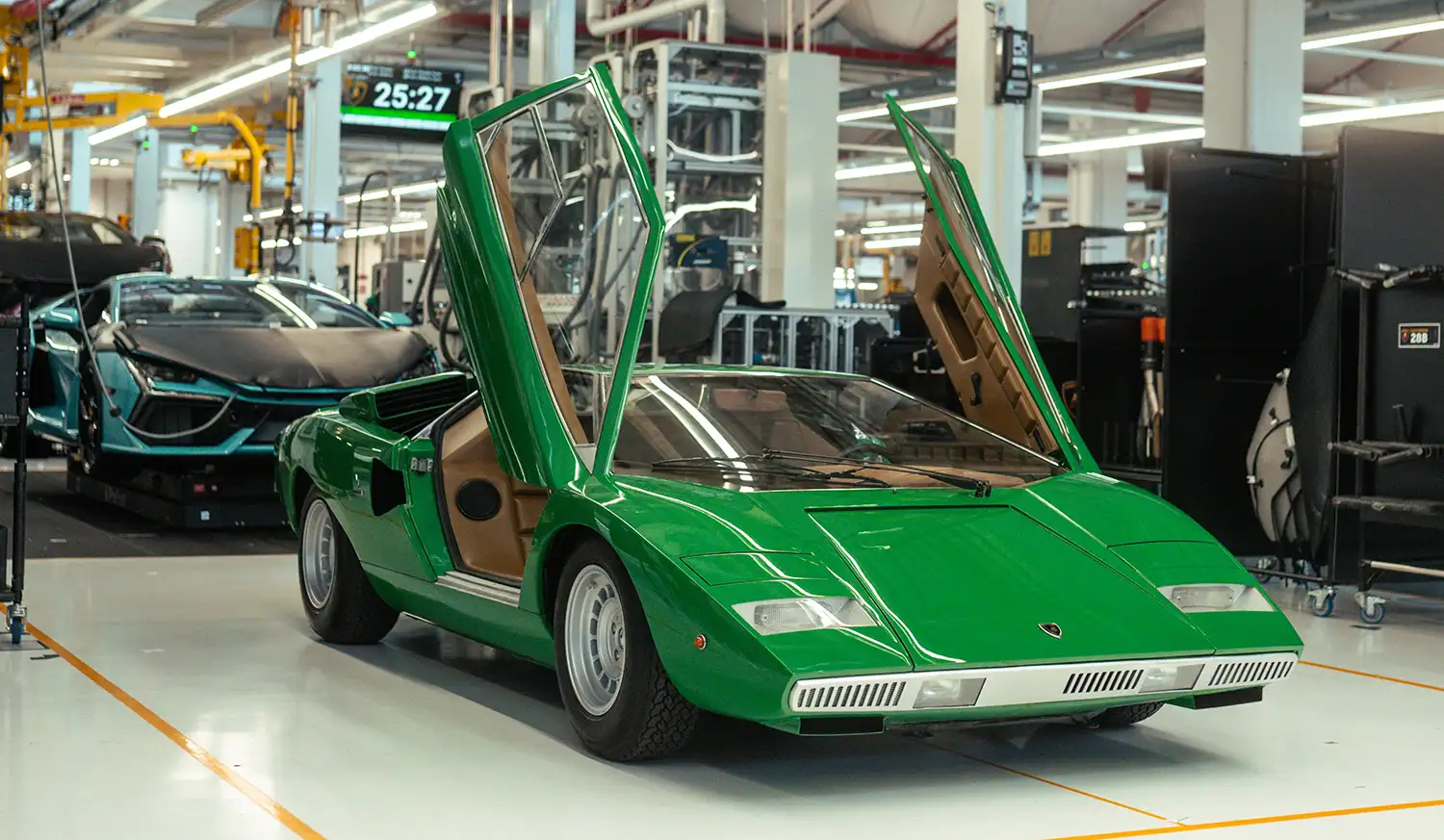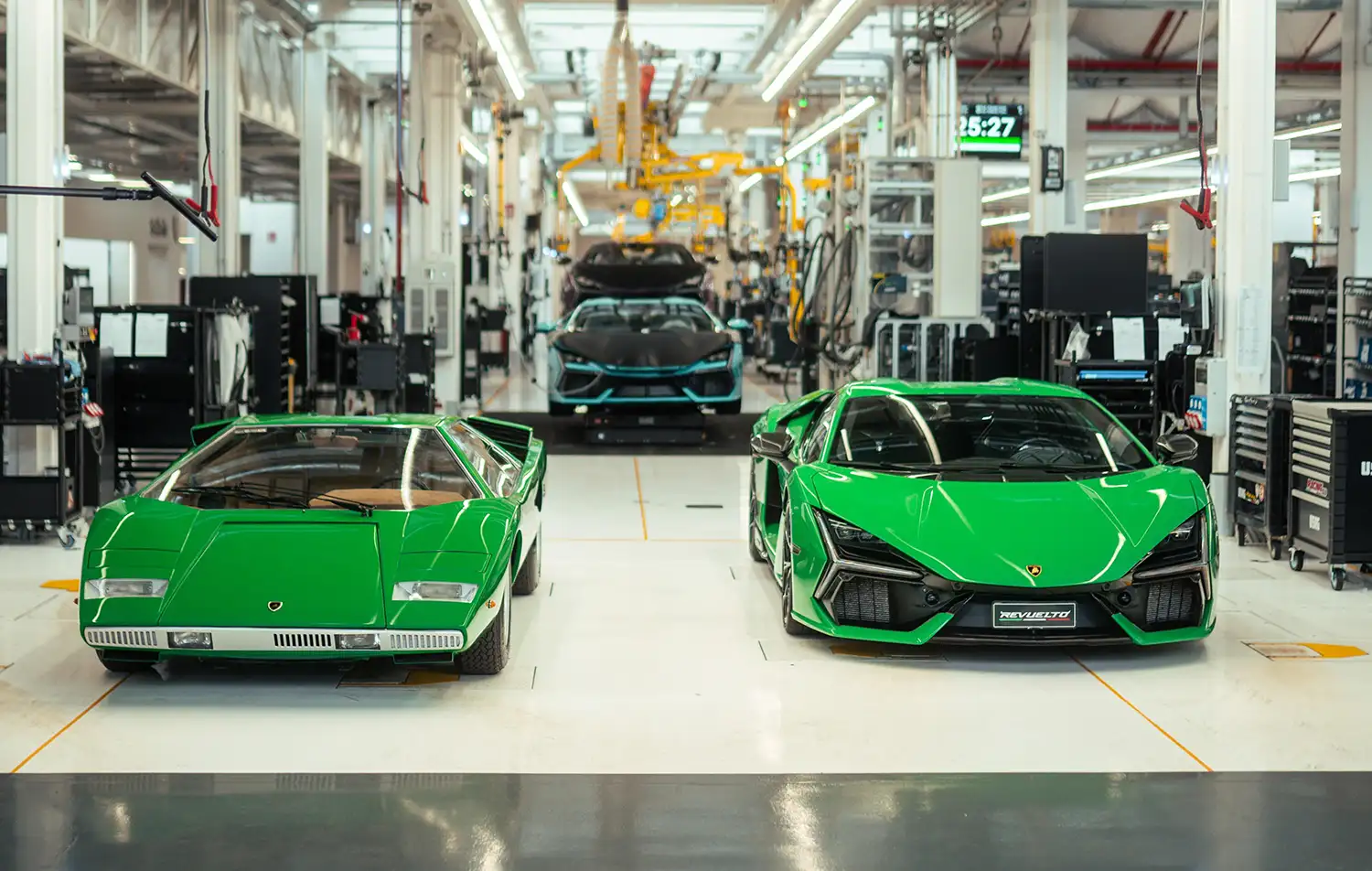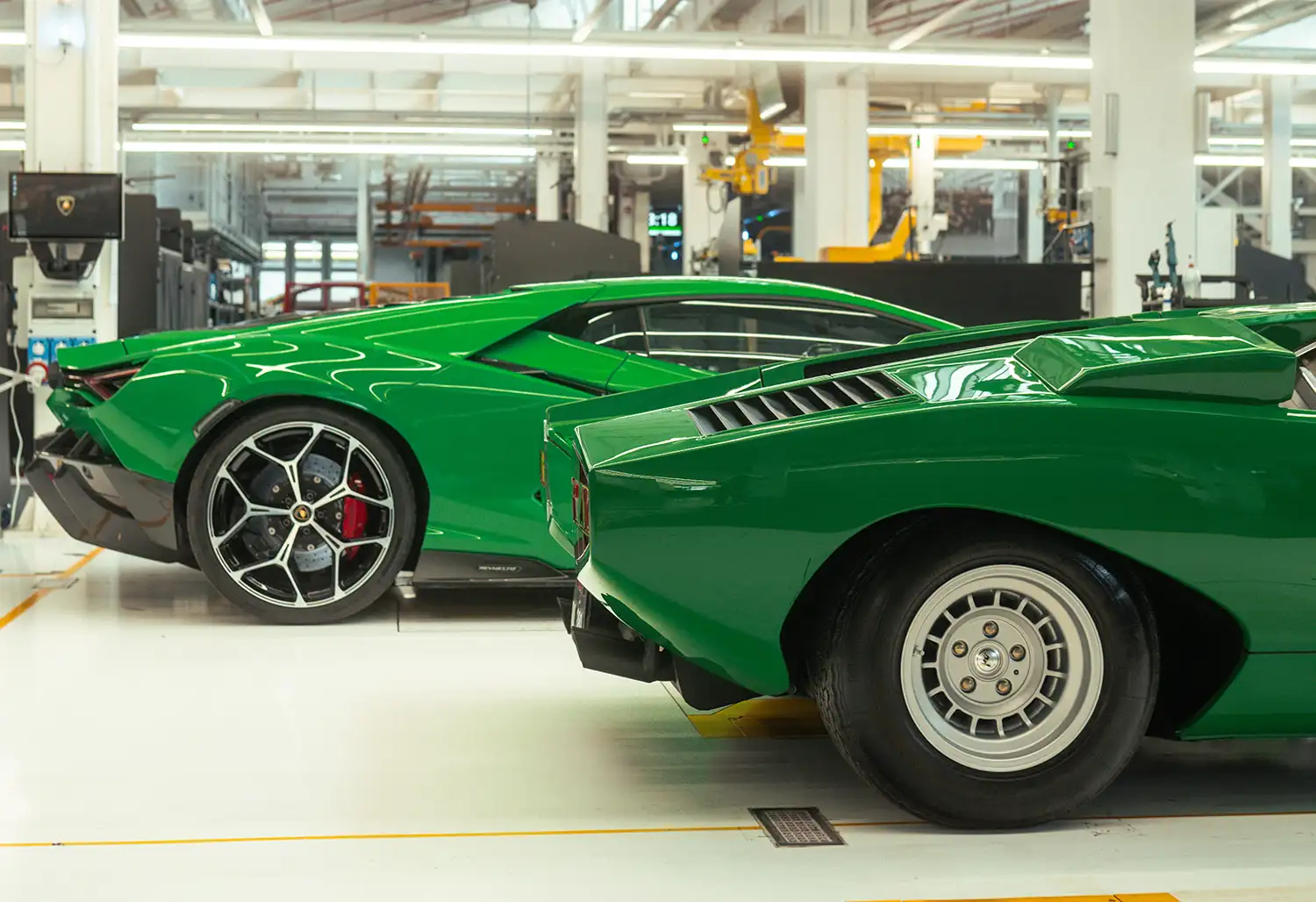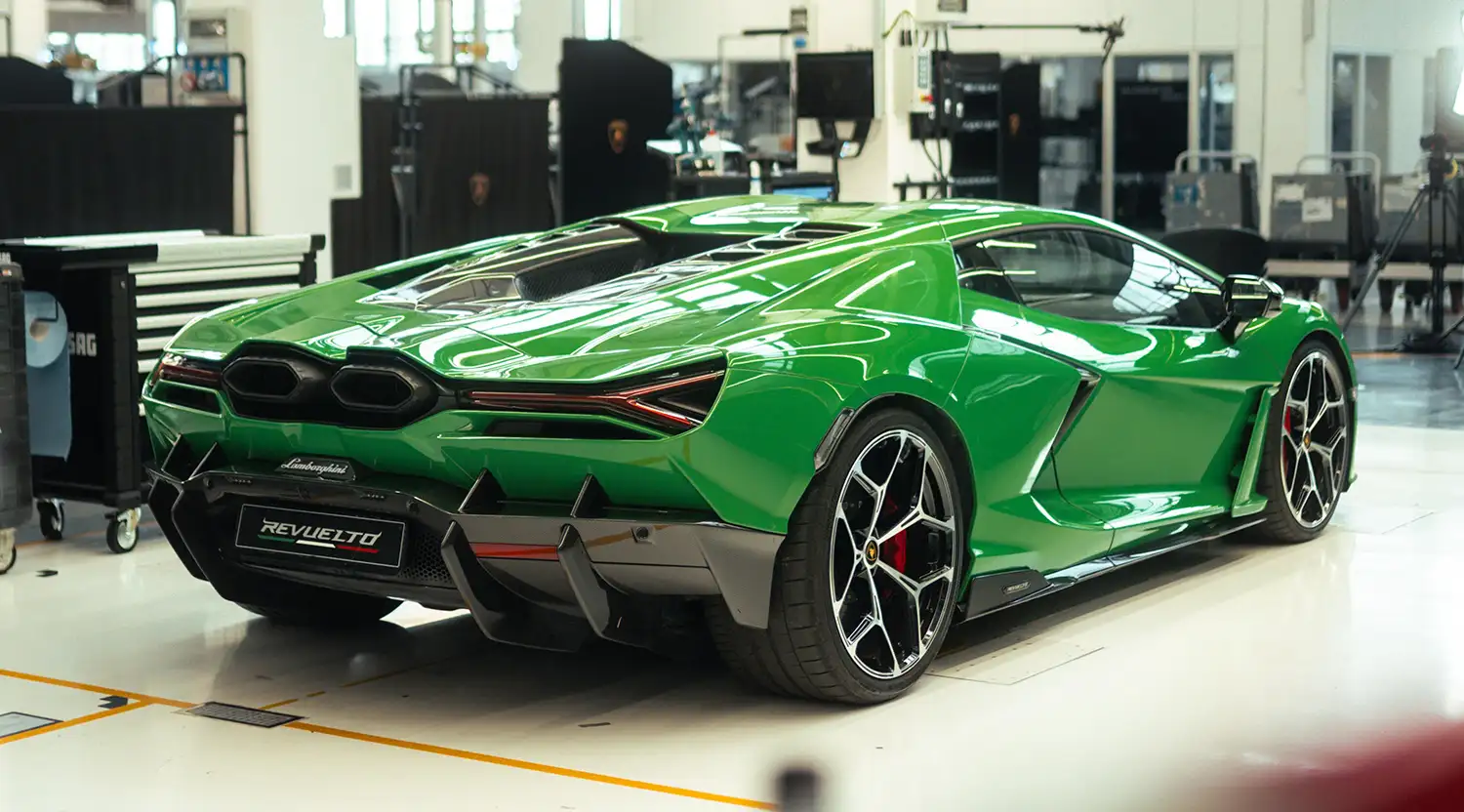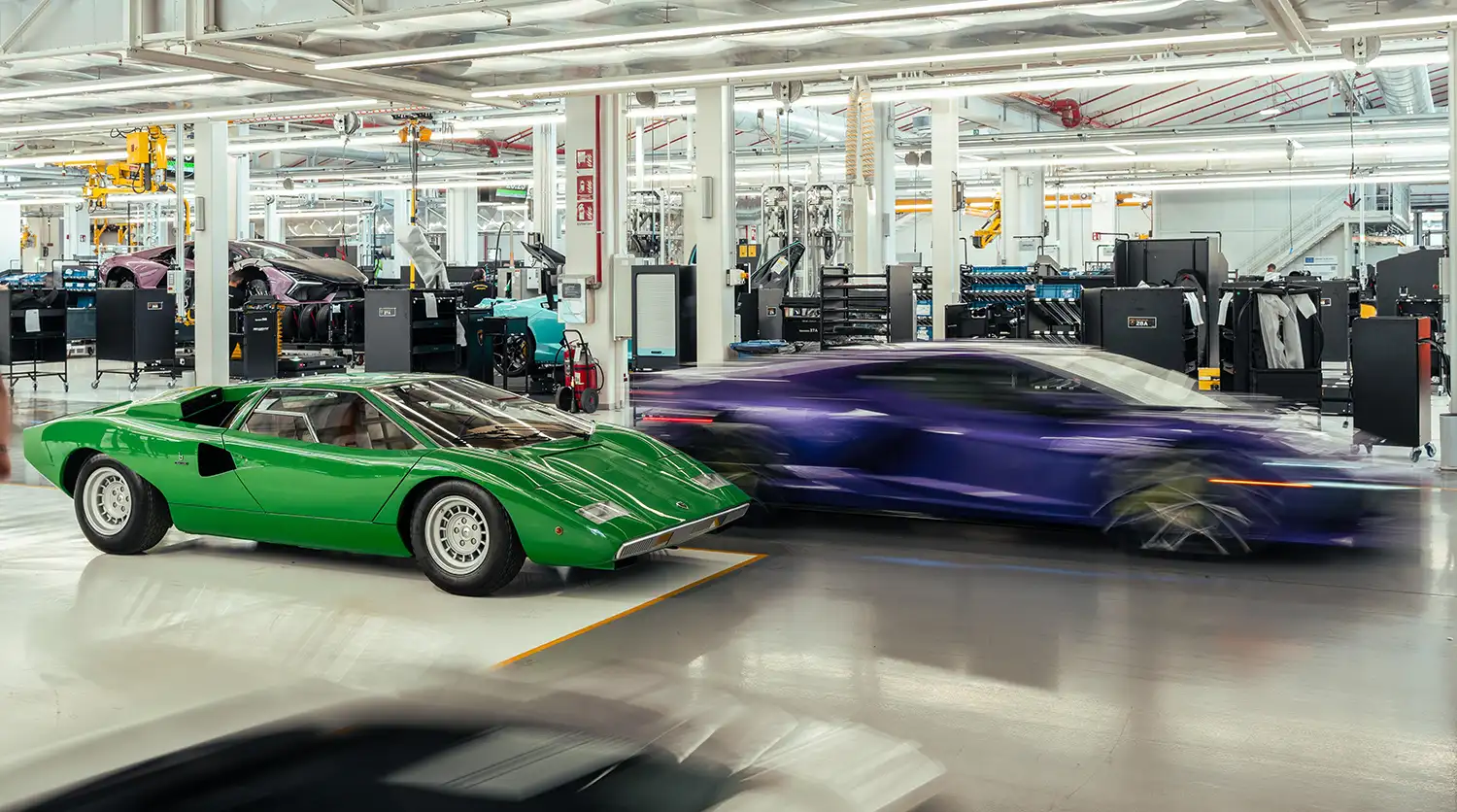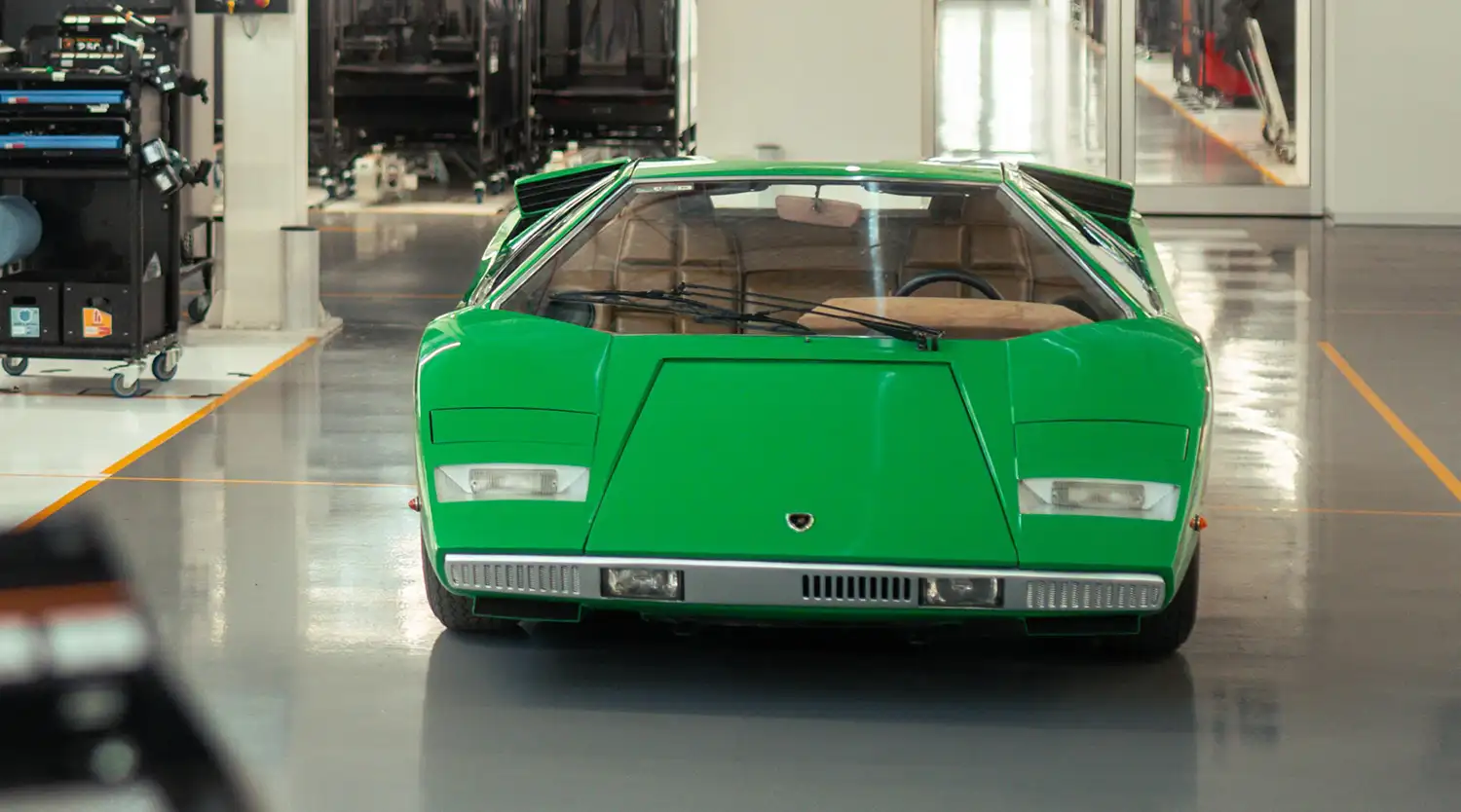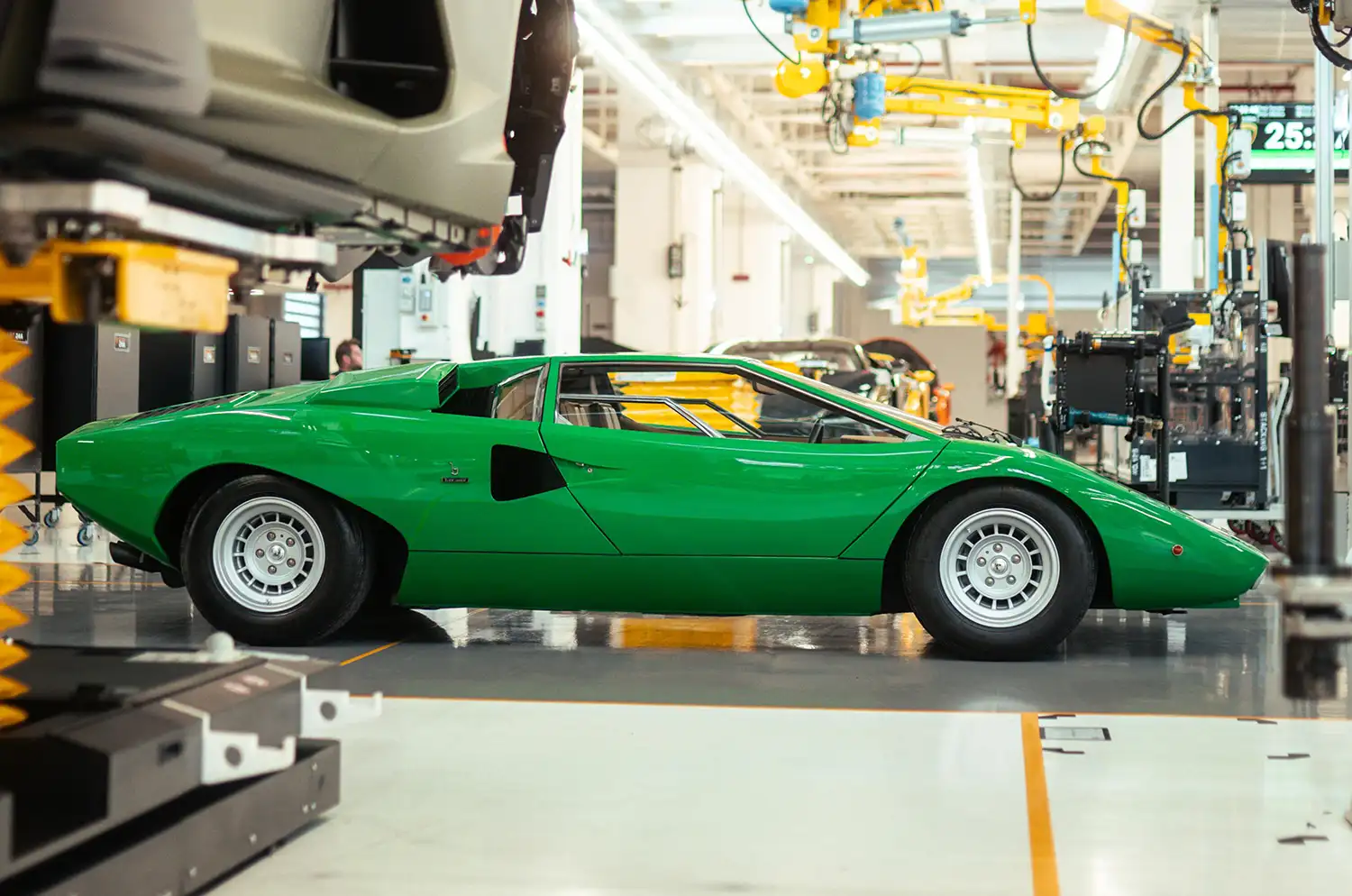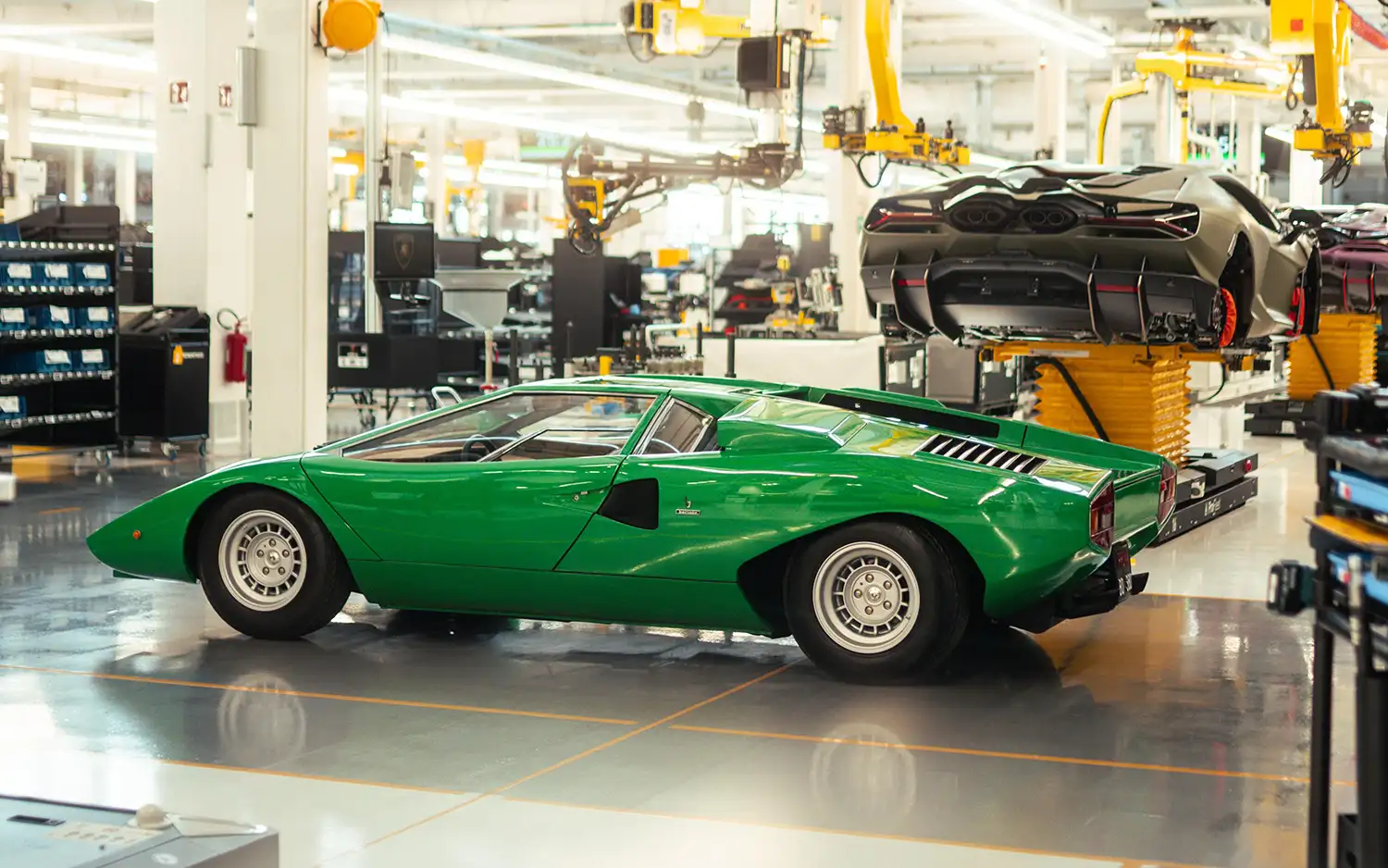
In March 1974, Lamborghini embarked on a journey that would forever change the automotive world. The Countach, which began production at the Lamborghini factory in Sant’Agata Bolognese, quickly became an icon and remained in production for an impressive 16 years. This groundbreaking model was the first Lamborghini to be produced entirely in-house, marking a significant shift in the company’s manufacturing processes and setting the stage for the brand’s future.
The Birth of a Legend
The Lamborghini Countach LP 400 made its debut at the Geneva Motor Show on March 11, 1971, as an “idea car.” Its futuristic design and incredible performance immediately captured the imagination of the automotive world. After three years of rigorous development and testing, Lamborghini was ready to bring the Countach into full production, a process that involved creating a new production line at their Sant’Agata Bolognese factory.
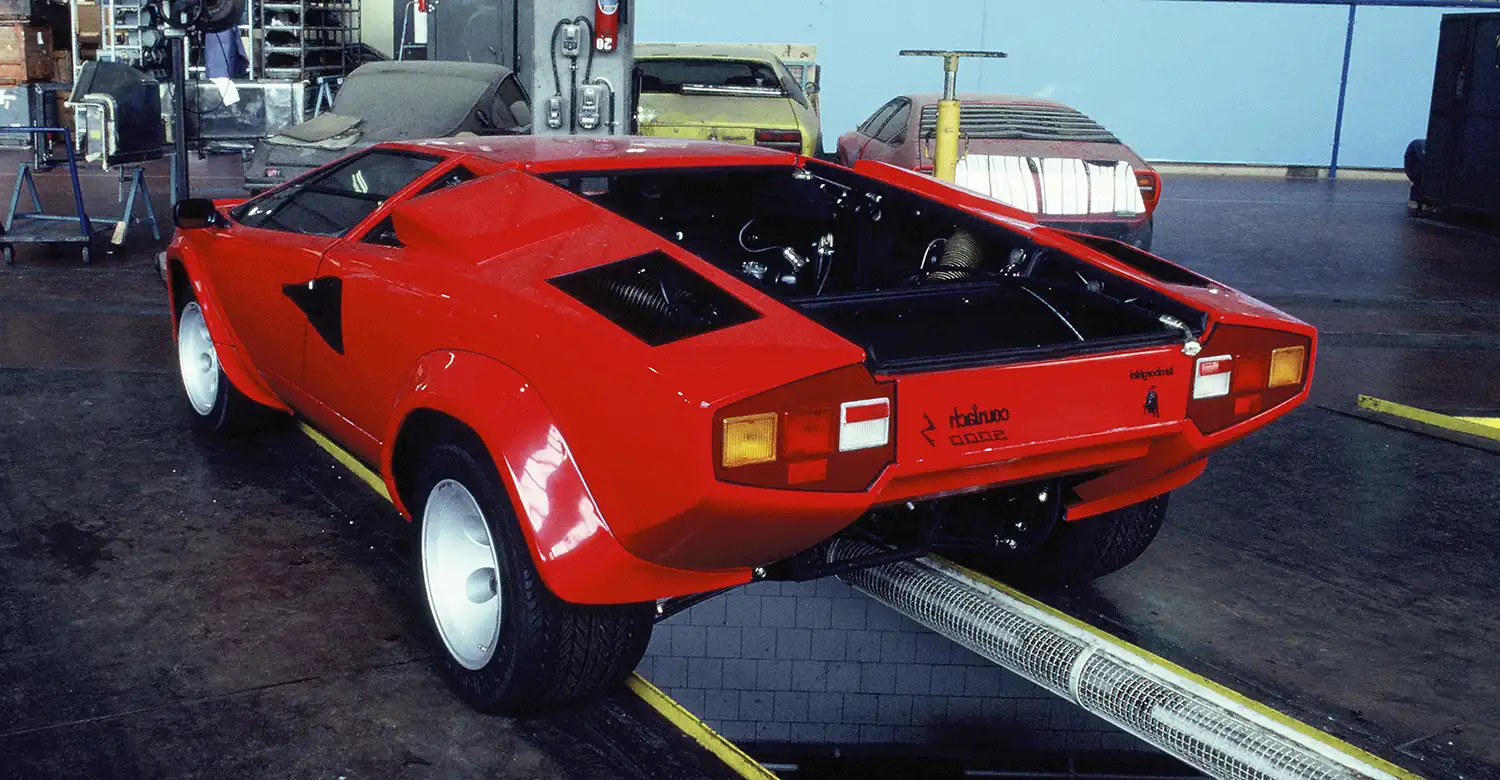
For the first time in Lamborghini’s history, the bodywork of the car was produced in-house. Previously, Lamborghini had relied on external coachbuilders to create the bodies of their cars, which were then assembled at the factory. By bringing this process in-house, Lamborghini not only streamlined production but also allowed for greater control over quality and design.
No.1 Countach Assembly Line
The Countach was assembled on the No.1 Countach Assembly Line, located in the original Lamborghini factory. This factory, which began construction in 1963 and was completed in 1966, included all the necessary facilities for producing a car from start to finish. Over time, the factory expanded, adding new buildings and increasing its production capacity. Despite these changes, the No.1 Assembly Line remains an integral part of Lamborghini’s history, and it continues to be used today for the production of the latest models, such as the Revuelto.
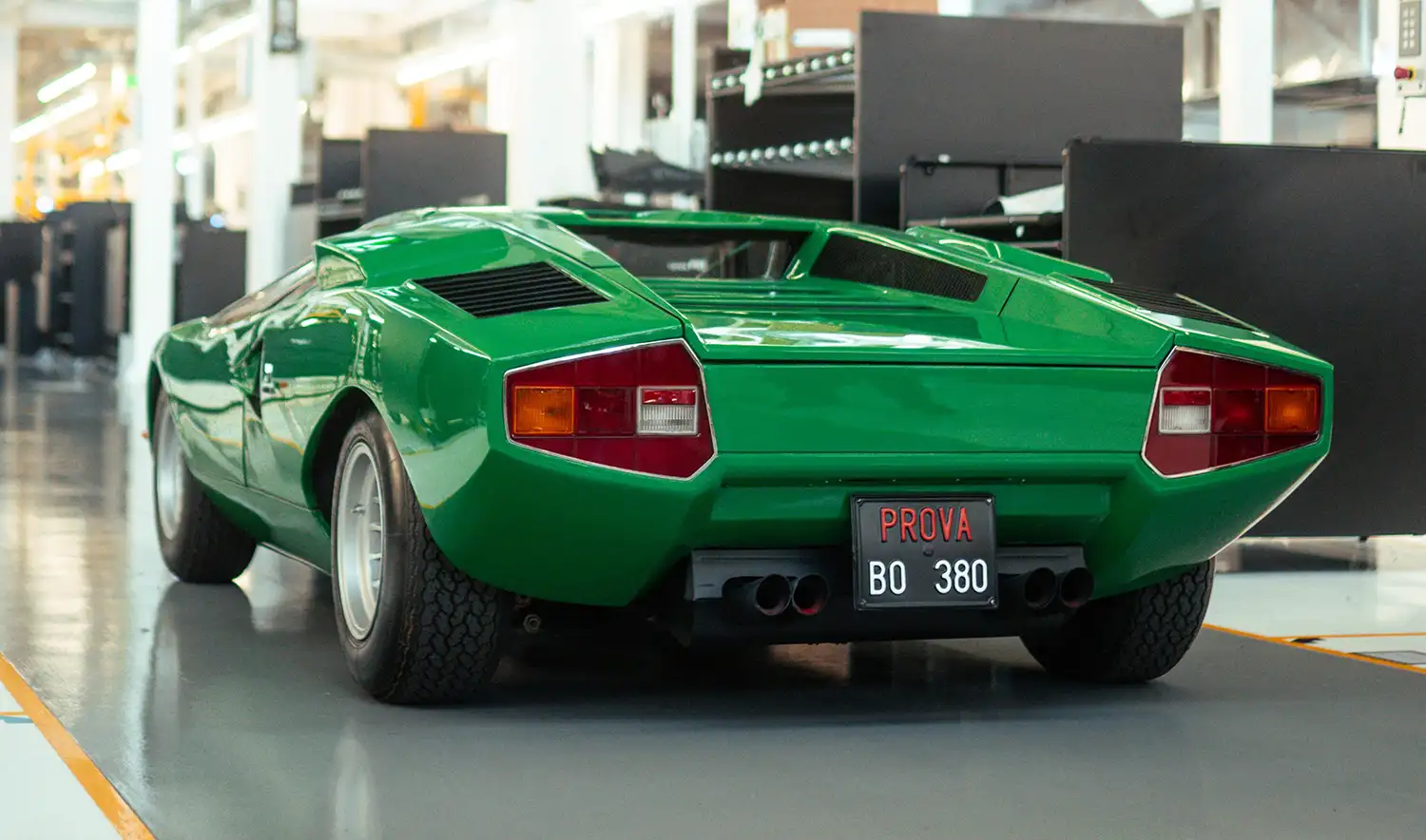
Continuity and Evolution
Over the years, Lamborghini has introduced several models that continue the legacy of the Countach. Although the technologies and materials have evolved, the passion and craftsmanship that go into each car remain unchanged. The Countach was the first Lamborghini to feature the now-iconic “Scissor” doors, a design element that continues to be a hallmark of Lamborghini’s V12 models.
Half a century after its introduction, the Countach remains a symbol of Lamborghini’s commitment to innovation and excellence. The Revuelto, Lamborghini’s latest 12-cylinder plug-in hybrid, carries forward the spirit of the Countach, combining cutting-edge technology with the same attention to detail and craftsmanship that made the Countach a legend.
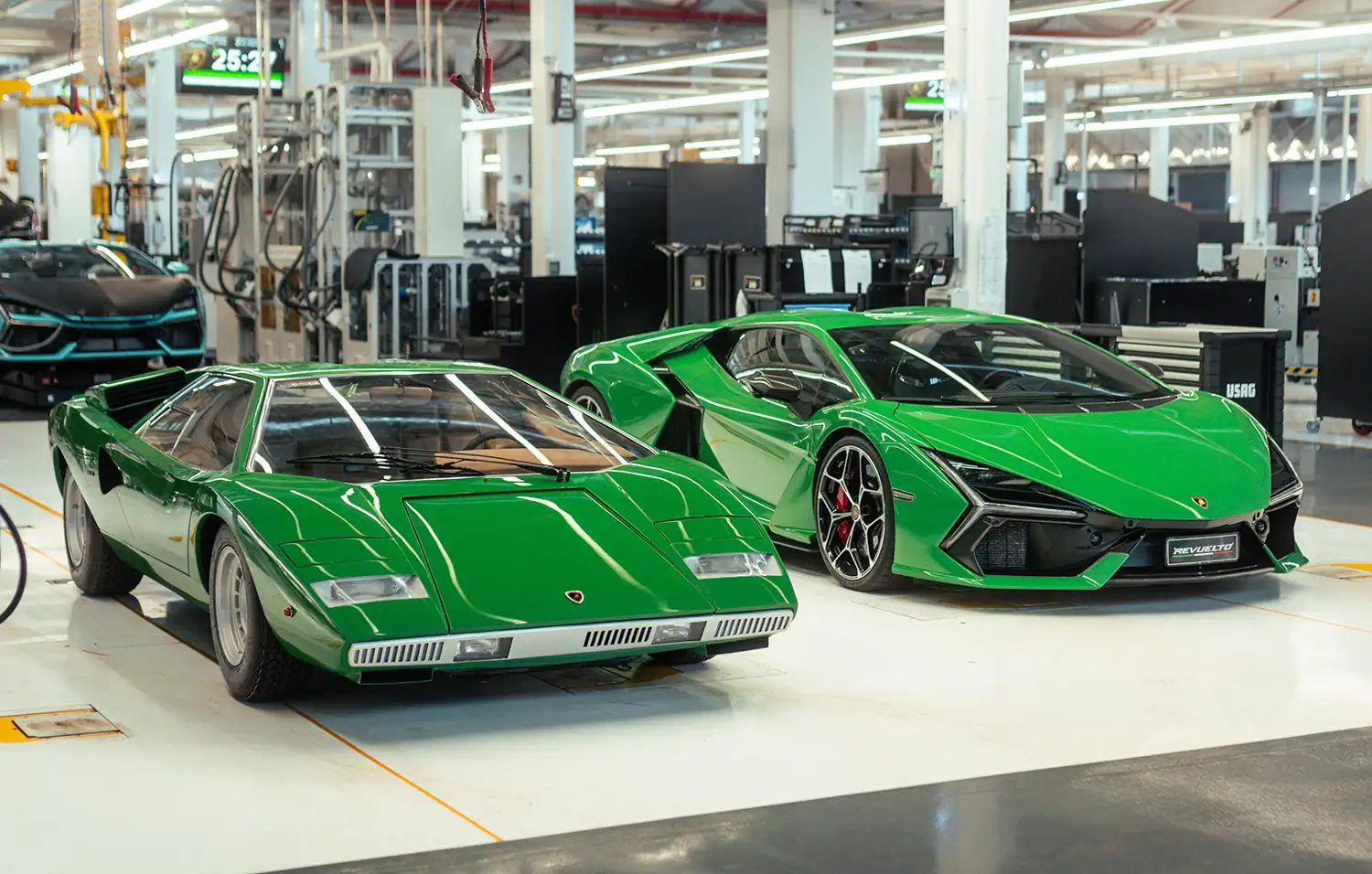
The Countach Legacy
The Lamborghini Countach was produced in several different versions over its 16-year production run, each building on the success of its predecessor. The LP 400, LP 400 S, LP 5000 S, Quattrovalvole, and the 25th Anniversary edition each brought something new to the table, whether it was increased power, improved aerodynamics, or enhanced aesthetics.
By the time production of the Countach ended in 1990, nearly 2,000 units had been built, making it one of Lamborghini’s most successful models. The Countach not only cemented Lamborghini’s reputation as a manufacturer of high-performance supercars but also helped establish the brand as a leader in automotive design and innovation.
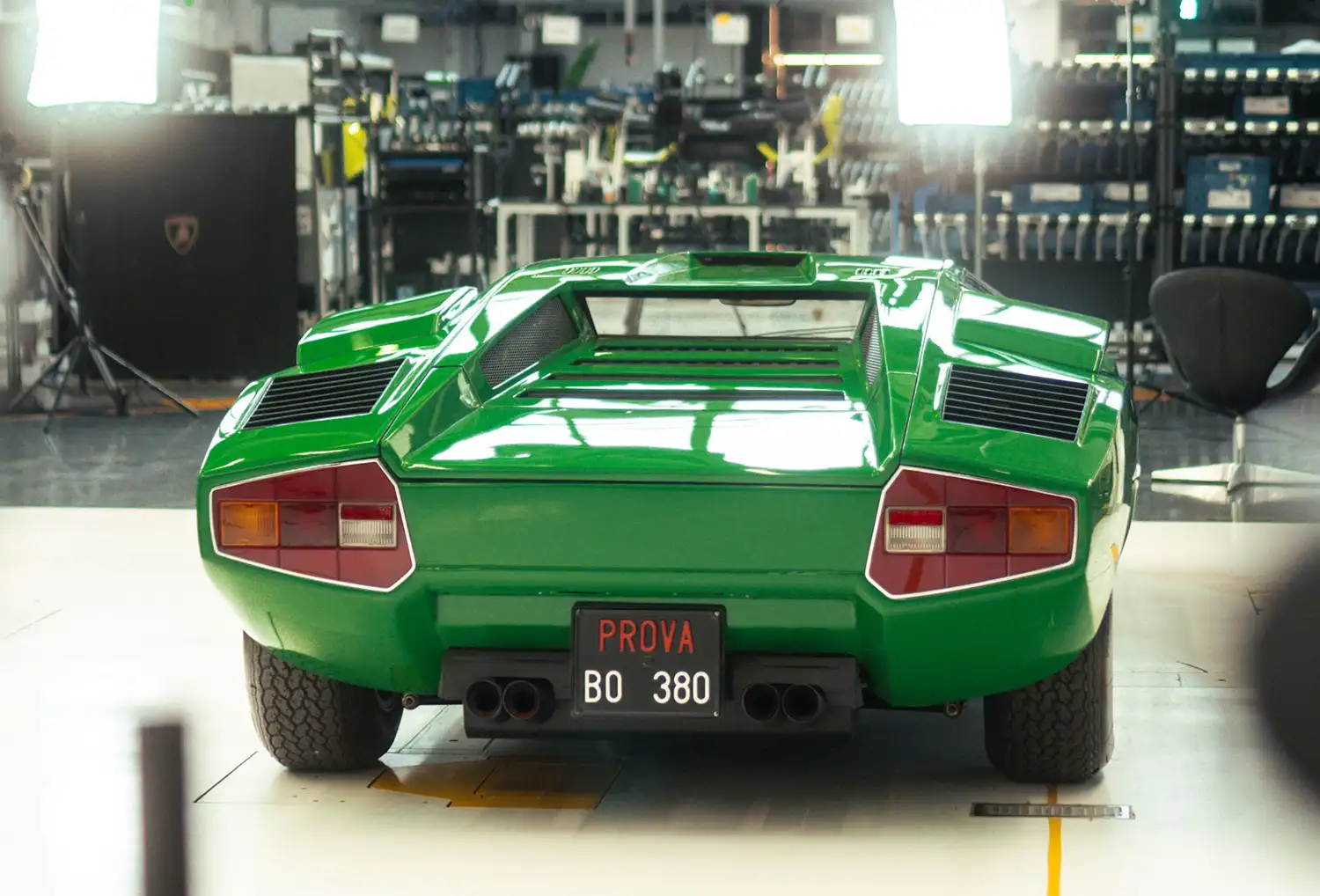
Lamborghini Countach Model Specifications
Below is a simple table summarizing the key specifications for each version of the Lamborghini Countach:
Lamborghini Countach LP 400 (1974-1978)
- Engine: 60° V12, 3929 cc, 375 CV at 8000 rpm
- Transmission: 5-speed manual
- Suspension: Independent front and rear with coil springs
- Brakes: Ventilated disk
- Curb weight: 1065 kg
- Tires: Michelin XWX (front 205 x 14, rear 215 x 14)
Lamborghini Countach LP 400 S (1978-1982)
- Engine: 60° V12, 3929 cc, 353 CV at 7500 rpm
- Transmission: 5-speed manual
- Suspension: Independent front and rear with coil springs
- Brakes: Ventilated disk
- Curb weight: 1200 kg
- Tires: Pirelli P7 (front 205/70-15, rear 345/35-15)
Lamborghini Countach 5000 S (1982-1984)
- Engine: 60° V12, 4754 cc, 375 CV at 7000 rpm
- Transmission: 5-speed manual
- Suspension: Independent front and rear with coil springs
- Brakes: Ventilated disk
- Curb weight: 1490 kg
- Tires: Pirelli P7 (front 205/50-15, rear 345/35-15)
Lamborghini Countach Quattrovalvole (1985-1988)
- Engine: 60° V12, 5167 cc, 455 CV at 7000 rpm
- Transmission: 5-speed manual
- Suspension: Independent front and rear with coil springs
- Brakes: Ventilated disk
- Curb weight: 1490 kg
- Tires: Pirelli P7 F (front 225/50-VR15, rear 345/35-VR15)
Lamborghini Countach 25th Anniversary (1988-1990)
- Engine: 60° V12, 5167 cc, 455 CV at 7000 rpm
- Transmission: 5-speed manual
- Suspension: Independent front and rear with coil springs
- Brakes: Ventilated disk
- Curb weight: 1490 kg
- Tires: Pirelli (front 225/50-R15, rear 345/35-R15)
The Lamborghini Countach remains a timeless icon, a car that not only defined a generation but also set the standard for future supercars. As Lamborghini continues to innovate, the Countach’s legacy lives on, inspiring new generations of automotive enthusiasts around the world.
Source: Lamborghini
This Article use tools from Chatgpt


